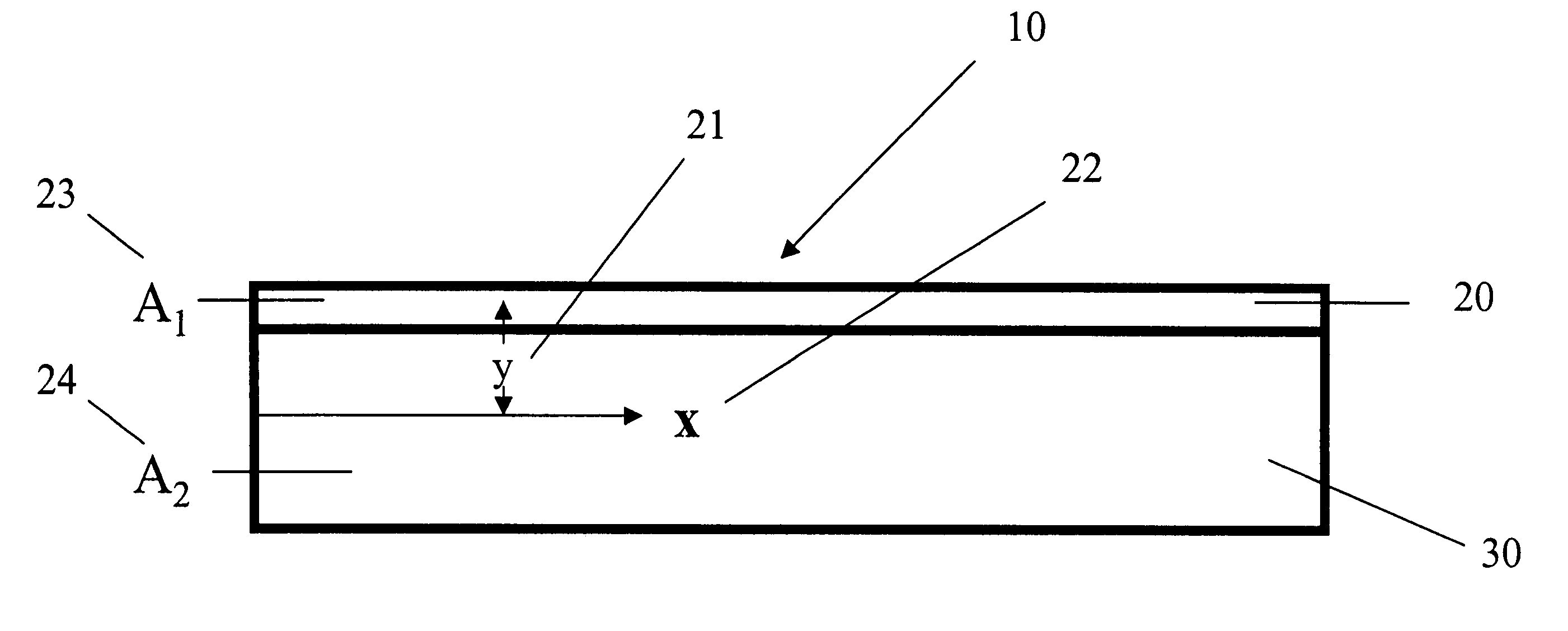Flexible display designed for minimal mechanical strain
a flexible display and mechanical strain technology, applied in the field of electronic displays, can solve the problems of changing the thickness of the crystal layer, the natural flexibility of the plastic substrate, and the display utilizing glass substrates is less suitable, so as to achieve the effect of minimizing and/or eliminating mechanical strain in flexible electronic structures
- Summary
- Abstract
- Description
- Claims
- Application Information
AI Technical Summary
Benefits of technology
Problems solved by technology
Method used
Image
Examples
Embodiment Construction
[0024] The invention has numerous advantages over prior art flexible optical display devices. It allows more freedom in designing smaller and more rugged devices. It also makes it possible to produce curled displays. Another advantage of using flexible substrates is that a plurality of display devices can be manufactured simultaneously by means of continuous web processing such as, for example, reel-to-reel processing. The manufacture of one or more display devices by laminating (large) substrates is alternatively possible. Dependent on the width of the reels used and the length and width of a reel of (substrate) material, a great many separate (display) cells or (in the case of “plastic electronics”) separate (semi-) products can be made in these processes. Such processes are therefore very attractive for bulk manufacture of said display devices.
[0025] These and other advantages will become apparent from the detailed description below.
[0026] First, the means of calculating the st...
PUM
 Login to View More
Login to View More Abstract
Description
Claims
Application Information
 Login to View More
Login to View More - R&D
- Intellectual Property
- Life Sciences
- Materials
- Tech Scout
- Unparalleled Data Quality
- Higher Quality Content
- 60% Fewer Hallucinations
Browse by: Latest US Patents, China's latest patents, Technical Efficacy Thesaurus, Application Domain, Technology Topic, Popular Technical Reports.
© 2025 PatSnap. All rights reserved.Legal|Privacy policy|Modern Slavery Act Transparency Statement|Sitemap|About US| Contact US: help@patsnap.com



